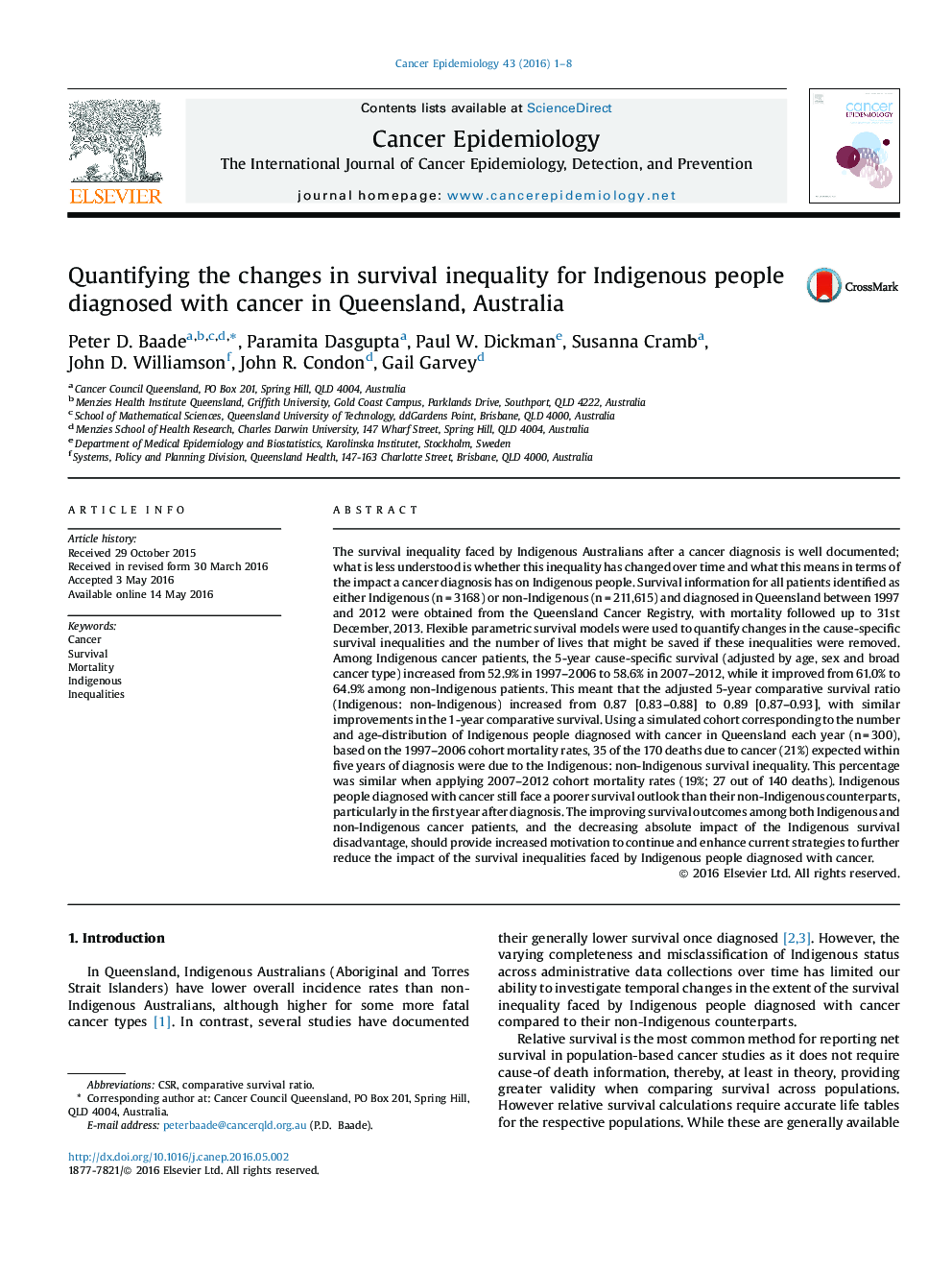| کد مقاله | کد نشریه | سال انتشار | مقاله انگلیسی | نسخه تمام متن |
|---|---|---|---|---|
| 2108811 | 1546532 | 2016 | 8 صفحه PDF | دانلود رایگان |
• Flexible parametric survival models were used to assess Indigenous survival inequalities.
• Survival increased over time for both Indigenous and non-Indigenous cancer patients.
• Survival remains lower among Indigenous people diagnosed with cancer.
• This lower survival contributes to one in five cancer-related Indigenous deaths.
The survival inequality faced by Indigenous Australians after a cancer diagnosis is well documented; what is less understood is whether this inequality has changed over time and what this means in terms of the impact a cancer diagnosis has on Indigenous people. Survival information for all patients identified as either Indigenous (n = 3168) or non-Indigenous (n = 211,615) and diagnosed in Queensland between 1997 and 2012 were obtained from the Queensland Cancer Registry, with mortality followed up to 31st December, 2013. Flexible parametric survival models were used to quantify changes in the cause-specific survival inequalities and the number of lives that might be saved if these inequalities were removed. Among Indigenous cancer patients, the 5-year cause-specific survival (adjusted by age, sex and broad cancer type) increased from 52.9% in 1997–2006 to 58.6% in 2007–2012, while it improved from 61.0% to 64.9% among non-Indigenous patients. This meant that the adjusted 5-year comparative survival ratio (Indigenous: non-Indigenous) increased from 0.87 [0.83–0.88] to 0.89 [0.87–0.93], with similar improvements in the 1-year comparative survival. Using a simulated cohort corresponding to the number and age-distribution of Indigenous people diagnosed with cancer in Queensland each year (n = 300), based on the 1997–2006 cohort mortality rates, 35 of the 170 deaths due to cancer (21%) expected within five years of diagnosis were due to the Indigenous: non-Indigenous survival inequality. This percentage was similar when applying 2007–2012 cohort mortality rates (19%; 27 out of 140 deaths). Indigenous people diagnosed with cancer still face a poorer survival outlook than their non-Indigenous counterparts, particularly in the first year after diagnosis. The improving survival outcomes among both Indigenous and non-Indigenous cancer patients, and the decreasing absolute impact of the Indigenous survival disadvantage, should provide increased motivation to continue and enhance current strategies to further reduce the impact of the survival inequalities faced by Indigenous people diagnosed with cancer.
Journal: Cancer Epidemiology - Volume 43, August 2016, Pages 1–8
